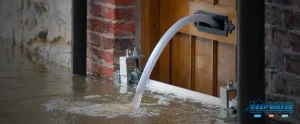It is summer once again! Is your home ready for mold and mildew buildup?
If this is your first time owning a property, it is vital that you know a thing or two about mold and mildew. Information about how these two fungi grow can save your newly-bought or built house from getting unduly damaged.
Often, the two are interchanged because they are both types of fungus. However, there is a difference between mold and mildew. For instance, molds are usually color green, red, or black, while mildews are color white or gray. Nonetheless, they are both harmful to people and to the structural integrity of your house.
How Fungi Affects Your Home
When dealing with the effects of water damage, you have to expect that you will also face problems caused by the growth of fungi like molds. These bacteria damage your property in different ways. To help you identify which parts of the property and household components molds frequently target, here are the things that you have to keep an eye on:
1. Damaged Wood Parts
Most single-detached homes are made of wood because they cost less and are readily available in hardware stores. It makes the construction of the property quicker and more efficient. However, wood is susceptible to wear and tear, especially without proper maintenance.
If your home happens to be mainly made of wood and gets damaged by water, it becomes prone to mold and mildew growth. When these two fungi pile up in the wooden areas of the house, the foundation will weaken, and can collapse anytime. As the structural integrity of your home becomes severely affected, it becomes dangerous to live in.
Nowadays, builders treat wood-based materials with anti-fungi solutions. These help prevent molds from infecting your home. However, you have to be mindful that recoating is needed for the solutions to continuously serve their purpose.
2. Damaged Fabrics
When you accidentally throw a substantial amount of liquid (water, juice, or solutions) into your furniture or they get soaked in flood during a storm, the fabrics become susceptible to the growth of fungi like molds.
When you notice stains in your furniture fabrics, it is one of the signs of mildew and mold growth. Another indication of fungus presence is when you start to itch when you sit or lie down on your furniture. If you have sensitive skin and had direct contact with damaged fabrics, you will quickly feel uncomfortable and itchy. The presence of mold can also trigger your allergy if you have one because of the furry structure of the fungus.
Ways to Prevent or Mitigate Mold Growth
Now that you know where to look for when trying to find molds, it is crucial that you know how to mitigate the situation and keep the fungi from coming back. Here are some ways to prevent molds from growing on your property:
1. Have Proper Ventilation
Proper ventilation during the summer season is essential for everyone’s comfort. It is also helpful in preventing mold and mildew buildup on your property.
Some well-designed homes have features that allow natural air to flow in and out. If your property has high windows, keep them open when the AC unit is off to let warm air flow out and keep cool air inside. When you have proper air circulation going in and out of the house, it will keep your furniture and fixtures dry, and will make it difficult for mold and mildew to grow.
2. Repair Damaged Furniture and Fixtures
Did your property encounter flooding due to a natural disaster or a recent plumbing issue like water leakage? If your answer is yes and you haven’t fixed the affected fixtures yet, call your local mitigation company immediately.
As mentioned, mold and mildew grow in damp and moist areas. When you encounter flooding because of a faulty plumbing fixture, it is not enough that you only fix the damaged pipes. You also have to contact a repair and mitigation company to check if there are already molds in the area and to have these removed completely so they will not cause any further damage to your property.
Also, experts know what kills mold and mildew effectively. They use chemical mixtures to stop fungal growth in your home without damaging its wooden and metallic components.
3. Do Regular House Cleaning
As a homeowner, it is crucial that you keep your property clean. However, there are instances when you’re unable to do this important task. To ensure that your home is safe from mold and mildew buildup, allot at least one day each month for general cleaning.
Use a mold and mildew cleaner if you see traces of the fungi while doing household work. This helps remove stains and mold traces, preventing them from coming back for a second round of buildup.
A mold and mildew cleaner is usually available in many grocery and hardware stores, so it will not be difficult for you to find them. However, it is important that you use the product carefully and moderately. Although the typical cleaner is effective in removing mold traces, it can also damage weak materials in your home given the strong chemicals that it contains.
4. Boost the Use of HVAC System
Warm air, quite common during summer, holds more moisture. To ensure that there is no dampness or excess moisture in the home, boost the use of your HVAC system.
Air conditioning units and dehumidifiers create dry air, and either of these is an effective mold and mildew remover. During the summer season, turn on your air conditioning units to keep humid air out. You also have to ensure that all windows and doors are closed, so the same air will not come in and bring moisture.
Call Deep Water Emergency Services & Mitigation Now
Do you need mold mitigation services?
At Deep Water Emergency Services & Mitigation, we have a team of mold mitigation Denver, CO, specialists who can ensure that your water-damaged property will be fully restored and mitigate the harmful effects of mold and mildew buildup.
We have our own mold and mildew remover that can effectively kill both fungi. If you need our services, call us now. We assure you that you will not encounter the problem again for a long time with our regular maintenance service.






